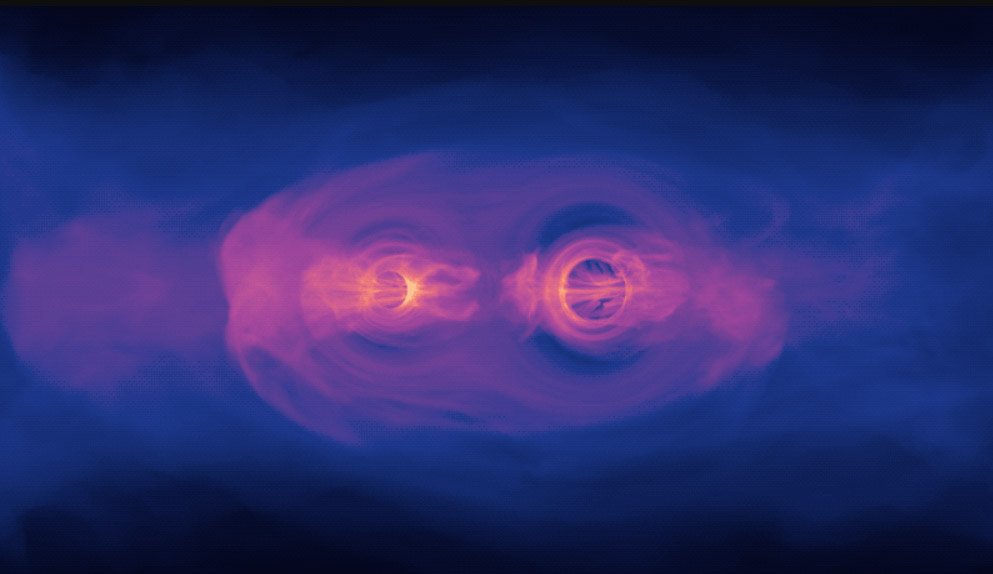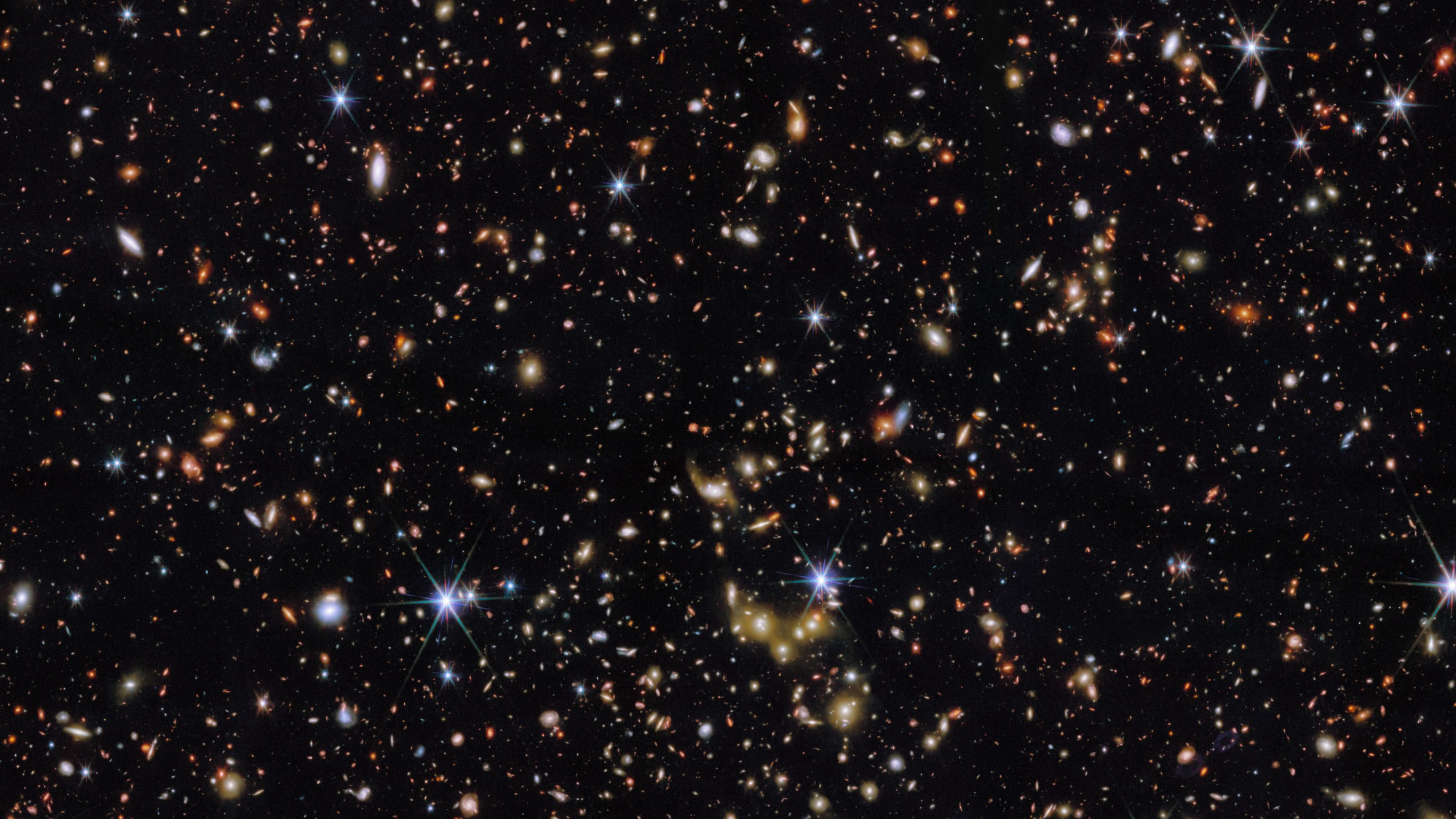This Trippy Simulation Shows How Monster Black Holes Glow Before They Collide
A new model suggests that merging supermassive black holes will glow in eerie ultraviolet and X-ray light as they spiral into an inevitable crash.
Supermassive black holes are millions or billions of times the mass of the sun and reside in just about every galaxy that is at least the size of our own Milky Way, according to a NASA statement. Scientists know that galaxies commonly combine; this will happen with the Milky Way and Andromeda, for example, in about 4 billion years.
"We know galaxies with central supermassive black holes combine all the time in the universe, yet we only see a small fraction of galaxies with two [black holes] near their centers," Scott Noble, an astrophysicist at NASA's Goddard Space Flight Center in Maryland, said in a statement. [No Escape: Dive Into a Black Hole (Infographic)]
While scientists have seen black hole mergers before, these were much smaller, according to the statement — comparable to the size of a star, meaning anywhere from three to a few dozen times the mass of the sun. These stellar-size black hole mergers were detected using the National Science Foundation's Laser Interferometer Gravitational-Wave Observatory (LIGO). Scientists found them by detecting gravitational waves, which are ripples in space-time generated after these large mergers.
Supermassive black hole mergers will be harder to track down, NASA officials said in the statement, because they are often much farther apart and emit weaker gravitational-wave signals. To detect that tiny signal, the detectors need to be located in space to avoid being disturbed by seismic waves on our own planet. A future mission that may do that is the European Space Agency's Laser Interferometer Space Antenna (LISA), scheduled for launch in the 2030s.

There is another possible method to find supermassive mergers, however. When galaxies merge, they bring with them collections of gas, dust, stars and planets. As the collision occurs, a lot of this material would be dragged toward the black holes — which then begin to "eat" the material, generating radiation that astronomers should be able to see (before the material crosses the black hole's event horizon).
The new simulation followed what happens over three orbits of supermassive black holes that are about 40 orbits away from completely merging. The model suggests that at this time in the merger, there would be some UV light and high-energy X-rays visible in telescopes.
Get the Space.com Newsletter
Breaking space news, the latest updates on rocket launches, skywatching events and more!
"Three regions of light-emitting gas glow as the black holes merge, all connected by streams of hot gas: a large ring encircling the entire system, called the circumbinary disk, and two smaller ones around each black hole, called mini disks," NASA officials said.
"All these objects emit predominantly UV light," the officials continued. "When gas flows into a mini disk at a high rate, the disk's UV light interacts with each black hole's corona, [which is] a region of high-energy subatomic particles above and below the disk. This interaction produces X-rays. When the accretion rate is lower, UV light dims relative to the X-rays."
The simulation suggests that X-rays in a supermassive black-hole merger will be brighter and more variable than X-rays observed in solitary supermassive black holes. (The changes have to do with how fast gas around the black hole orbits, as well as the orbits of the merging black holes themselves.)
The simulation was performed at the National Center for Supercomputing Applications' Blue Waters supercomputer at the University of Illinois at Urbana-Champaign. This particular simulation estimated gas temperatures, while future simulations will incorporate parameters such as temperature, total mass and distance to see the effects on the light the merger emits, according to the statement.
The new work was detailed yesterday (Oct. 2) in The Astrophysical Journal.
Follow us @Spacedotcom, Facebook and Google+. Original article on Space.com.
Join our Space Forums to keep talking space on the latest missions, night sky and more! And if you have a news tip, correction or comment, let us know at: community@space.com.

Elizabeth Howell (she/her), Ph.D., was a staff writer in the spaceflight channel between 2022 and 2024 specializing in Canadian space news. She was contributing writer for Space.com for 10 years from 2012 to 2024. Elizabeth's reporting includes multiple exclusives with the White House, leading world coverage about a lost-and-found space tomato on the International Space Station, witnessing five human spaceflight launches on two continents, flying parabolic, working inside a spacesuit, and participating in a simulated Mars mission. Her latest book, "Why Am I Taller?" (ECW Press, 2022) is co-written with astronaut Dave Williams.









